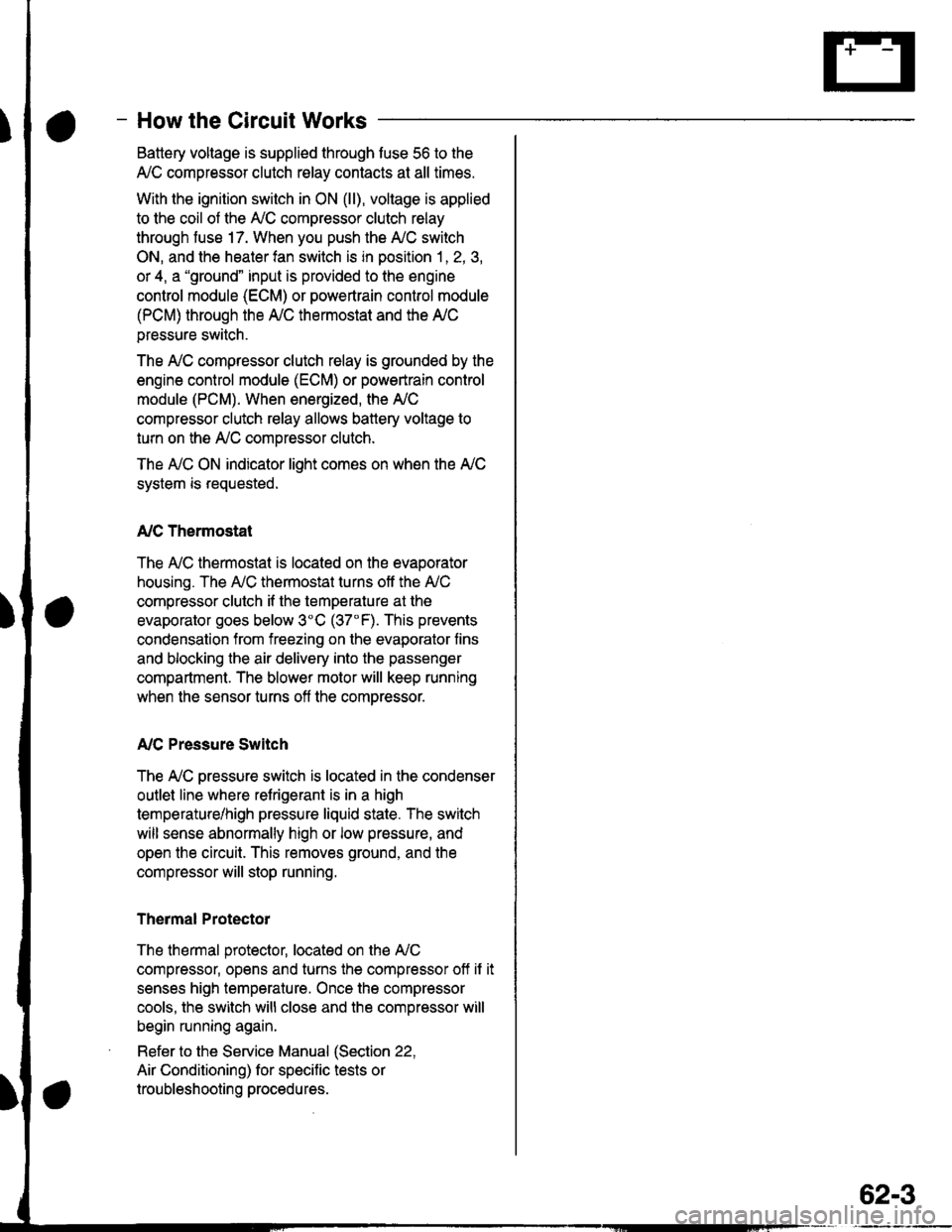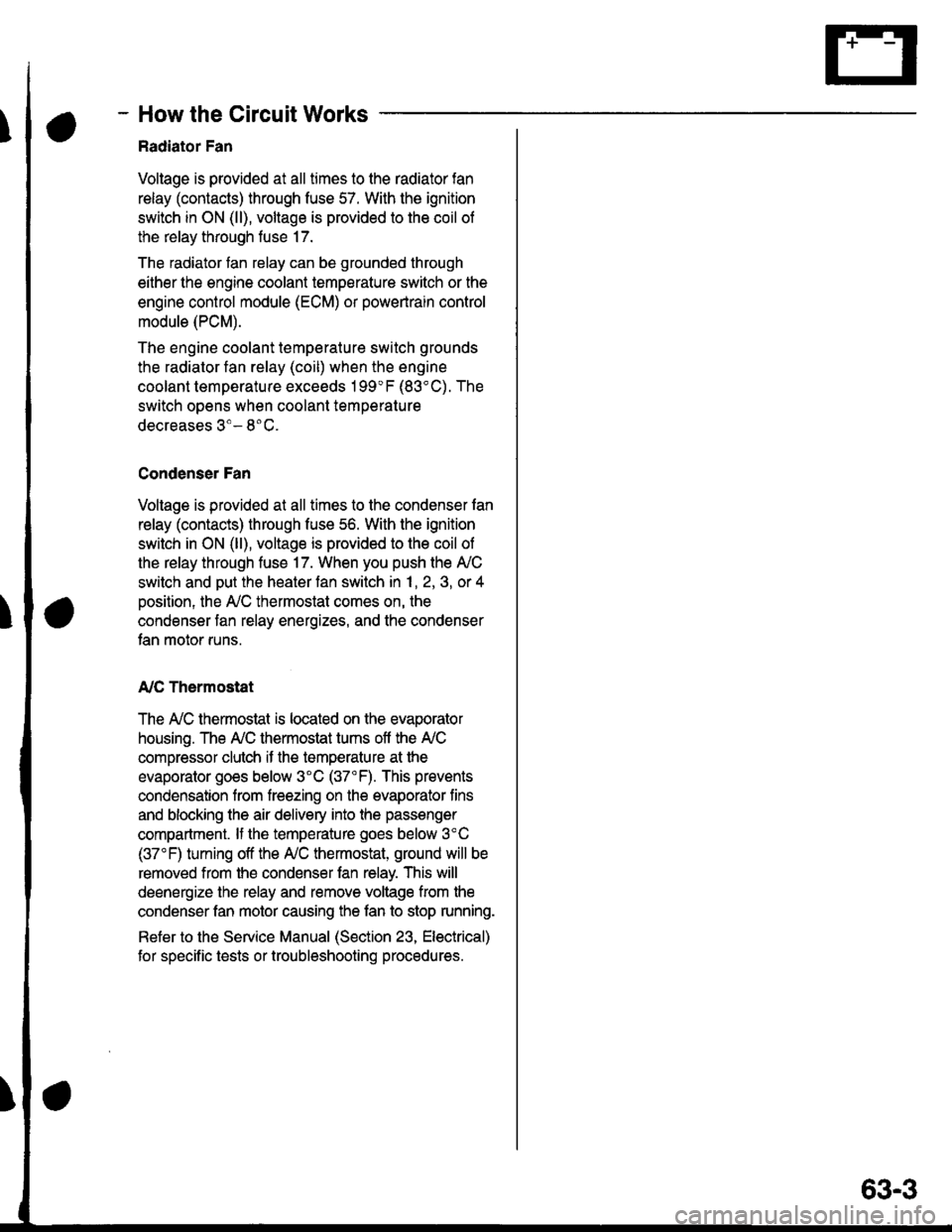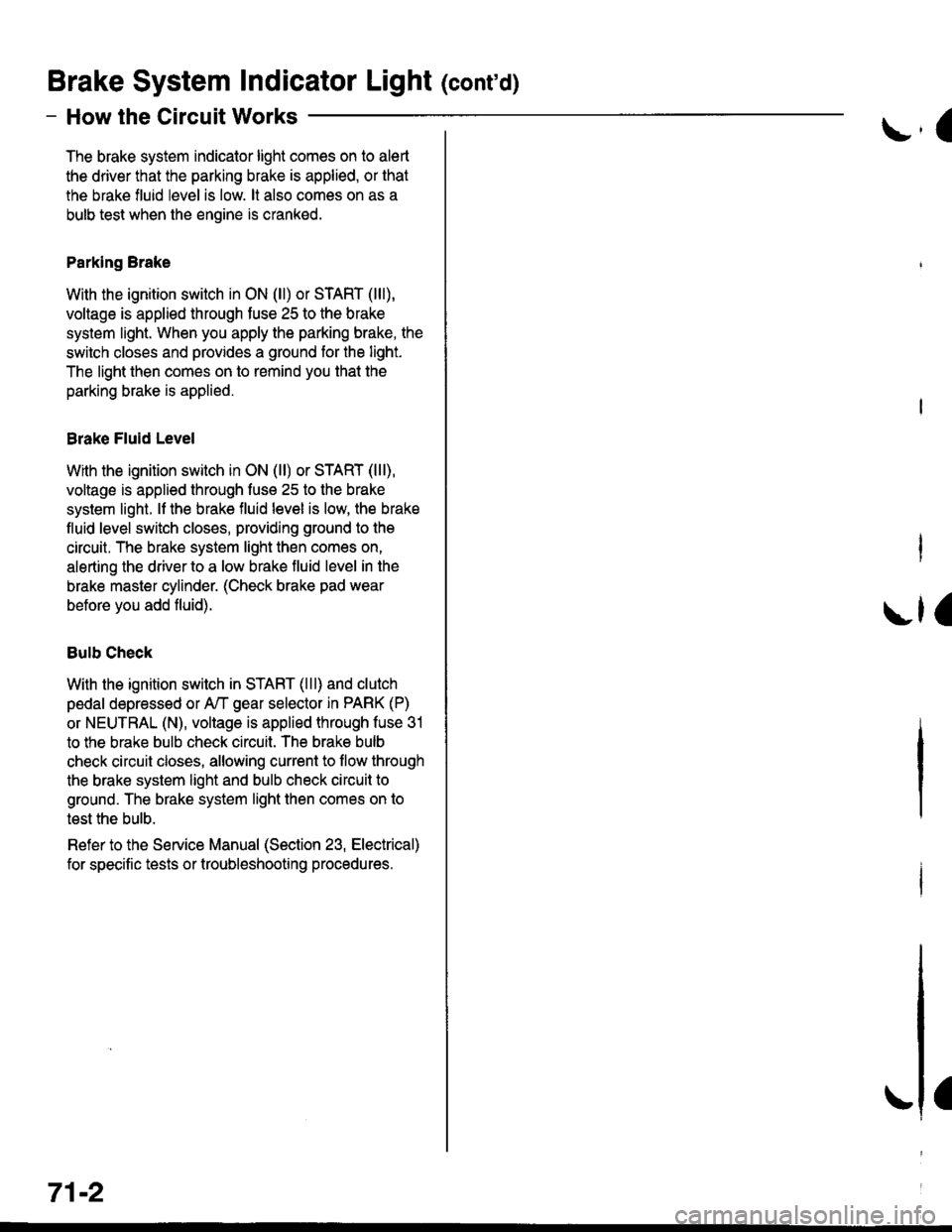Page 1891 of 2189
![HONDA CIVIC 1996 6.G Workshop Manual t)
POWERTRAINorENGINECONTROLMODULE(PCM or ECM)
BLKryVHT
fFUSE 15AL1EA|{A]OAsP sExsoa7.54See PowerDistribution,page 10-5.
UNDER.DASHFUSE/RELAYBOX
t\-I Secondary! HO2S input, (sf,o2sl-------
- ,.-"., -^ HONDA CIVIC 1996 6.G Workshop Manual t)
POWERTRAINorENGINECONTROLMODULE(PCM or ECM)
BLKryVHT
fFUSE 15AL1EA|{A]OAsP sExsoa7.54See PowerDistribution,page 10-5.
UNDER.DASHFUSE/RELAYBOX
t\-I Secondary! HO2S input, (sf,o2sl-------
- ,.-"., -^](/manual-img/13/6068/w960_6068-1890.png)
t)
POWERTRAINorENGINECONTROLMODULE(PCM or ECM)
BLKryVHT
fFUSE 15AL1EA|{A]OAsP sExsoa7.54See PowerDistribution,page 10-5.
UNDER.DASHFUSE/RELAYBOX
t\-I Secondary! HO2S input, (sf,o2sl-------
- ,.-"., -^,o"::.f=_
rtl
ll er-x'wnr
g A crer
""",".--*'i-"fj*"
c432
c7a2
-l--
:
$i
see Power
SECOND- F rl EVAPORATIVE ' f-tl-l EVAPORA- ;ARY I I I EMISSION 'I I ITIVE
8iiE,R I ltt l !'JiiABi*"'il ltt l Et,i"'J""sENsoR I Jll I soleHoro 'l )ll I i9x1661
!t"93:t IJJ vs!:", iLLl !Ailf*'",,
: I 'l"u.t
".*,^,'"rf I ,----j I l';i";?'*
2 J:--;t, C432 ll 96 model: all Coupesptlofo /6 i 97 model a
coupes,
BLKI"V!/HT
--1"r", 'Y :t f iiiv!3 Y iiol-o ao
onr.r wxr I I ll catrfornra Sedan ll 9 g c49 !s8 mocJr, iri I a il!9.!a^5?
""""._l**t' ,L-
r I i,,o"n,n",l "f,",ul,,
-"-.1,=l
;^[::Ttn*- I i I
""1
,
+ g:%,, *"[
il I :D13 A A5A A15 A , A2gA 428 |'-----=,-- -=-7-tsHo2sc) tso2sHTci {Pcs) | {vs!,) (2wBs)Sensor Secondary EVAP purge ' EVAP control EVAP bypassground HO2S hedter controisolenoid : canister vent solenoidt control valve control , shut valve valve controlt , conkglttb------
BLKAA/HT
BLKAVHT
1
c401
c568
BLKTIVHT
BIK
FED1
Distribution, '
page 10-5. :
, BLK' YEL
SHUT BLU
(Terminals 1-10)
vtEw 52
! Ii{:',+'i":
II
23-11
Page 1894 of 2189
PGM-FI (All '96-'98 Models except D1685; 'g$.'00 D16y5 with M/T)
- D16Y5 engine (cont'd)
r-------1POWERTRAINOJENGINECONTROLMODULE(PCM or ECM)
c125
---------1
FUSE 15
$t"t!ilS8" see Powert.5A - Distribution,page 10-5.
UNDER-DASHFUSE/RELAYBOXSecondaryH02Sanput(sH02s)
D14 I'
,n"r,"ao I
rtr
lt I
I
i,tjclt5(Ierminals'1-7]T I 1
vtEw 3a
HI
lffiq,m
,.ul
- '' :
3A-3uA---g'A--i--**----f'I :(sro2sc) (so2sHrc) (pcs) , ryse -"-*"i - l! 39Y.E!:
;:m AA8r"y- rvffi's" i euo8S:noo' E\"L'�Yssl 'iH;in';'
hearer sorenoid : :ill*',":* ;:fl'".t"* iiF!ii"te'-control valv6 control I controt ___-- ll?|Et",".,:
T
$
See Pow6rDistribution,page 10-5.
BLK,/li!/HT
BLK,\II/HT
1
c401
c568
EVAPORATIVE :EM|SSTON ;(EVAP) PUBGE .CONTROLSOLENOIDVALVEPHOfO 38
EVAPORA.TIVEEMISSION(EVAP)CONTROLCANISTEFVENTSHUTVALVE
EVAPORA-TIVEEMtSStON(EVAP)BYPASSSOLENOIDVALVE
(See S/Mpage | 1-9for'99-'00models)
'98-'�00
mooets
c568
c4o1 :
PHO|A A5vlEW 59
11 g Ct31
See GroundDistribution,pag€ 14-1.
Y
I
anver.x
b9^
23-14
Page 1898 of 2189
I
t
! c,orna, (LG1)
Referencevoltage(vcc1)
ServicecnecKconn€ctorInput(scs)
POWERTRAINolENGINECONTROLMODULE(PCM or ECM)PHOfO 86
MapsensorinputSensorground(sGl)
A10
Ground Ground Ground1LG2) (PG1) (PG2)
See GroundDistribution,page 14-2.
MANIFOLDABSOLUTEPRESSURE(MAP}SENSOR
PHO|A 49 p16v7l
See ABS,SRS
Y
I
--J
SERVICECHECKCONNECTOR
vtEw39See GroundDistribution,page 14-5.
I
I
___JSe€ Ground: c402
(cont'd)
24-3
Page 1929 of 2189
A/T Gontrols ('96-'98 CVT) (conrd)
sfr
Dl0
YEUALU
@
I J
-'u-.'-.i - - -
I 3X3'5"
L]Sffiflulilir:
lLlftT:l,', "*,
3=:. fierminalslT-20)
*l
v56
r+
r andLights
"," I
;I
-JI!.
br
iee Dash
vtEw 56
IISs€ PowerDisfibution,page 10.6.Se€ PGIV-FI,page 23-12.See Dash arConsole Ligl
I FEo/ELK
lazIMANIFOLDABSOLUTEPRESSURE(MAP}
il'-
4o
(
REO/ELK-{ i["r.r,
RED/BLK
cl't5fferminals8n4)
wEw 3a
#.1 !3"" r,
c'l31PHOfO 85vtEw 59
1lc410
vtEw 35
Se€ GroundDistribution,page 1+7.
ORN/BLK
Dl1D12
a
-----1 ENGINE
I l-c_qllFgL
I l8l,:'�,T* lffiff" iF!&i:'
L_"S.f___ __y,' _j,ii!,J?"*
a
i
--r3 - -.
:F.
- - -.-o ,'i6i I rRANsMrssroN
I TP MAP
i iln'o, ;;;' iiaicato, i[f[!!! ftcM)
I input input conkol IVie-Jo:e'-L - - -- - - - - - - - - - - J
39-6
ir=l*--:*"ii*lF.?}t?''------JvtEwTa
\
Page 1957 of 2189

- How the Circuit Works
Battery voltage is supplied through tuse 56 to the
A,/C compressor clutch r€lay contacts at all times.
With the ignition switch in ON (ll), vollage is applied
to the coil of the A,/C compressor clutch relay
through fuse 17. When you push the A,/C switch
ON, and the heater fan switch is in position | , 2, 3,
or 4, a "ground" input is provided to the engine
control module (ECM) or powertrain control module
(PCM) through the l'lC thermostat and the l'lC
pressure switch.
The A,/C compressor clutch relay is grounded by the
engine control module (ECM) or powertrain control
module (PCM). When energized, the A'lC
compressor clutch relay allows battery voltage to
turn on the A,/C comDressor clutch.
The A,/C ON indicator light comes on when the A,/C
system is requested.
A,/C Thermostat
The A'lC thermostat is located on the evaoorator
housing. The A,/C thermostat turns off the A,/C
compressor clutch if the temperature at the
evaporator goes below 3'C (37'F). This prevents
condensation from freezing on the evaporator fins
and blocking the air delivery into the passenger
compartment. The blower motor will keep running
when the sensor turns off the comDressor.
A,/C Pressure Switch
The fuC oressure switch is located in the condenser
outlet line where refrigerant is in a high
temperature/high pressure liquid state. The switch
will sense abnormally high or low pressure, and
open the circuit. This removes ground, and the
compressor will stop running.
Thermal Protectot
The thermal protector, located on the A,/C
compressor, opens and turns the compressor off if it
senses high temperature. Once the compressor
cools, the switch will close and the compressor will
begin running again.
Refer to the Service Manual (Section 22,
Air Conditioning) for specific tests or
troubleshooting procedures.
62-3
Page 1958 of 2189
Fans
- AllModels\,1 |
splicedtogetherinstead of inthe junctionconnector onDl6Y5 models
c211PHOTO 11
FANRELAYPrtofo 10
Se€ I'i CCompre€sorCont ols
1
ALKAED
a
c352
f BLKaEou Y 9,;%,.cFN I vIEw 5e
;
"'
T
";::-:.."-!
Y:. ---::Y h!ii'in"," :
I : ""'I 'is.2o) :
I i,o''ur,ff;, l;l:'l?'* i
I r- - -, |JBEI :
I ; I control | ;
I :L--J :I ' PoWERTRAIN ordu. ' ENGINE CONTROL '' MODULE
: (PCMoTECM) :I PHAfO 86I wEw 7allqA ----.ENGINECOOLANTTEMPERATUREswtrcH BLLPHO|O 33 ?
Ses GrolndDiskibution,oaqe 14.
,I
H
:I
i:
"'*
1_l
c7531
BLU/BLK
ALK2
BLK
RADIATORFANMOTORI
BLK
BLK1
ELK
c753
CONDENSERFANMOTOR
a
* czsr
page 14.
II
FJ'Glot
c211
Gro!nd
T
Se€ GroundOstribution,Pago 14.4"t1 - '96.f98: All models'99-'00: 016Y5 with M/I 01685"2 = '99-'00: Allmodels exceptD16Y5 with M/T and 01685
cof{oENs€R
* czor33123lCVIl
63
Page 1961 of 2189

- How the Circuit Works
Radiator Fan
Voltage is provided at all times to the radiator fan
relay (contacts) through fuse 57. With the ignition
swilch in ON (ll), voltage is provided to the coil of
the relay through luse 17.
The radiator tan relay can be grounded through
either the engine coolant temperature switch or the
engine control module (ECM) or powertrain control
module (PCM).
The engine coolant temperature switch grounds
the radiator fan relay (coil) when the engine
coolant temperature exceeds 199'F (83'C). The
switch opens when coolanl temperature
decreases 3'- 8'C.
Condenser Fan
Voltage is provided at all times to the condenser fan
relay (contacts) through fuse 56. With the ignition
switch in ON (ll), voltage is provided to the coil of
the relay through fuse 17. When you push the A'lC
switch and put the heater fan switch in 1, 2,3, o( 4
position, the ly'C thermostat comes on, the
condenser fan relay energizes, and the condenser
fan motor runs.
A,/C Thermostat
The A,/C thermostat is located on the evaporator
housing. The A,/C thermostat tums off the A/C
compressor clutch if the temperature at the
evaporator goes below 3'C (37'F). This prevents
condensation from freezing on the evaporator fins
and blocking the air delivery into the passenger
compartment. lf the temperature goes below 3'C
(37"F) tuming off the Ay'C thermostat, ground will be
removed from the condenser fan relay. This will
deenergize the relay and remove voltage from the
condenser fan motor causing the fan to stop running.
Reter to the Service Manual (Section 23, Eleckical)
for specific tests or troubleshooting procedures.
63-3
Page 1969 of 2189

Brake System Indicator Light (cont'd)
- How the Circuit Works
The brake system indicator light comes on to alert
the driver that the parking brake is applied, or that
the brake fluid level is low. lt also comes on as a
bulb test when the engine is cranked.
Parking Brake
With the ignition switch in ON (ll) or START (lll),
voltage is applied through fuse 25 to the brake
system light. When you apply the parking brake, the
switch closes and provides a ground for the light.
The light then comes on to remind you that the
parking brake is applied.
Brake Fluid Level
With the ignition switch in ON (ll) or START (lll),
voltage is applied through fuse 25 to the brake
system light. lf the brake fluid level is low, the brake
fluid level switch closes, providing ground to the
circuit. The brake system light then comes on,
alerting the d verto a low brake fluid level in the
brake master cylinder. (Check brake pad wear
before you add fluid).
Bulb Check
With the ignition switch in START (lll) and clutch
pedal depressed or A'lT gear selector in PARK (P)
or NEUTRAL (N), voltage is applied through fuse 31
to the brake bulb check circuit. The brake bulb
check circuit closes, allowing current to flow through
the brake system light and bulb check circuit to
ground. The brake system light then comes on to
test the bulb.
Refer to the Service Manual (Section 23, Electrical)
for specific tests or troubleshooting procedures.
71-2
a
\fa